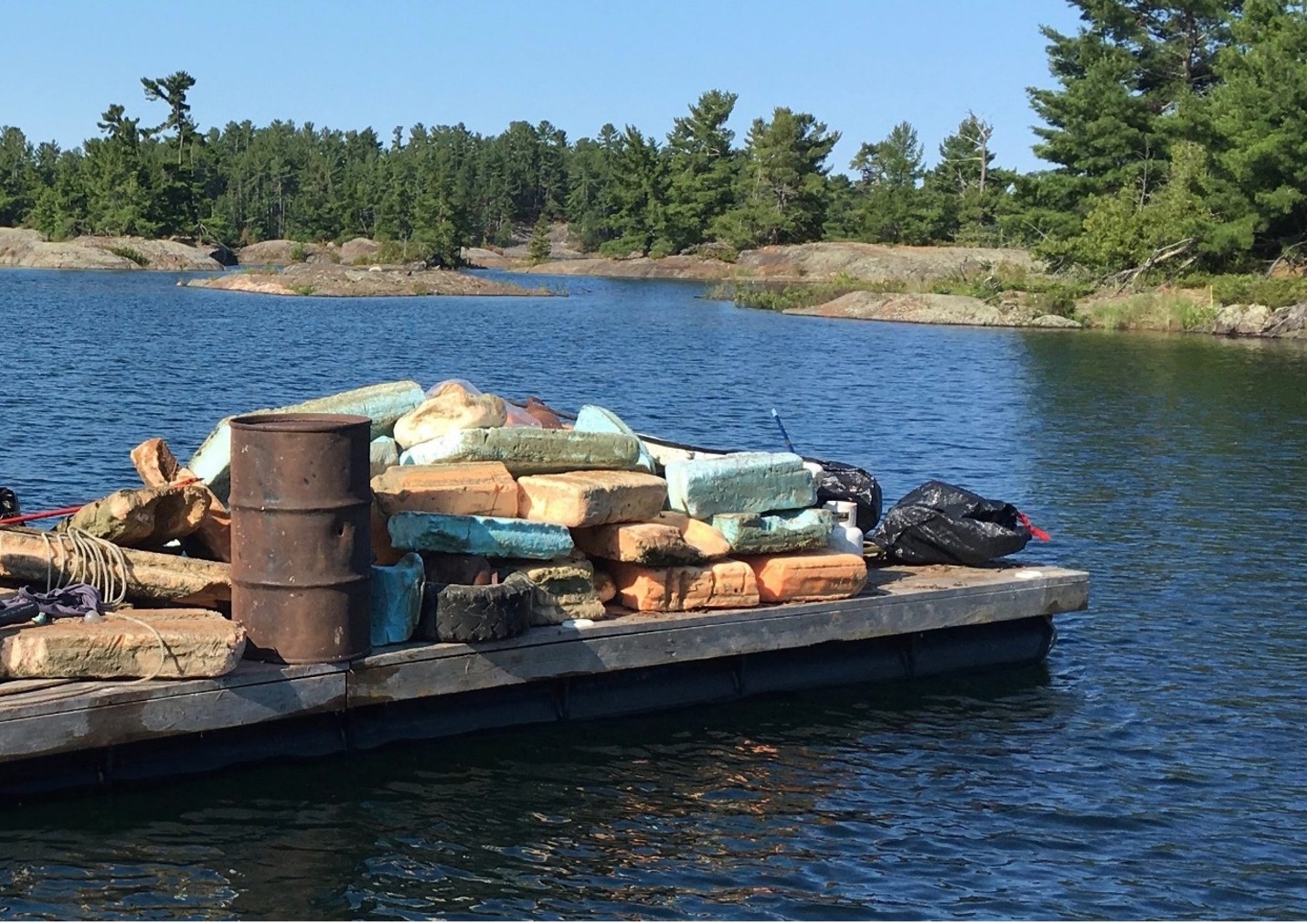By Donna Tucker
Ontario Member of Parliament Norm Miller’s Private Member’s Bill 228: Keeping Polystyrene Out of Ontario’s Lakes and Rivers Act became law on May 13, 2021. The Bill requires persons who sell, offer to sell or construct floating docks, floating platforms or buoys to ensure that any expanded or extruded polystyrene in the dock, platform or buoy is fully encapsulated. Now that the Bill has been passed the real work will begin, because the regulations, (an approximately two-year process) will be the prime determinant of how successful we can be in reducing what is the largest source (95%) of plastics pollution in Georgian Bay and, any waterways that have docks.
So, what is dock foam?
It is large blocks of buoyant polystyrene foam material that support docks by floating them. It’s a mixture of chemicals, including benzene and styrene, and comes in two types: expanded and extruded, the more common type being extruded, recognizable by its aqua blue colour.

Why is unencapsulated dock foam such a problem?
Over time the foam breaks up and gets chipped away into fragments by water action, particularly heavy waves and storms, by sunlight, and by animals chewing it. The fragments range from microscopic to large chunks, which release harmful chemicals into the water, litter shorelines, and break down further into microplastics. Polystyrene foam is a plastic and as such, never really goes away. It poses a threat to aquatic wildlife that could ingest it. These tiny particles accumulate in the food chain and can affect the animals and aquatic life that ingest them, impacting their survival, growth, swimming behaviour, feeding and reproduction.

Broken fragments of dock foam on a shoreline
What can you do?
Look under your dock – is the foam unencapsulated? If so, make a plan to change it out. It may have been damaged over the winter and/or high water. There are alternatives including encapsulated foam, steel and heavy plastic pontoons. While these alternatives are generally more expensive (by 10% at least) they will tend to last much longer and won’t fragment into thousands of litter pieces like unencapsulated polystyrene foam. Unencapsulated dock foam is currently one of the cheapest flotation materials for your docks, but it does not last as long as any of the alternatives. It is estimated that unencapsulated dock foam has a life span of 15 to 20 years. The alternatives (resin-encapsulated foam, 55-gallon plastic drums, encapsulated foam billets, or steel floats) all have longer life spans, some up to 60 years. Comparing unencapsulated foam to alternatives, the amortized cost per year is likely to be lower, or at least comparable, for the non-polluting alternatives.
There is another alternative that could be a do-it-yourself project that uses plastic barrels as floatation devices. For further information on this project and more detail about alternatives please visit this link: https://bit.ly/DocksPSFoam
You can also help by organizing a shoreline clean-up with your family and neighbours. Don’t forget to include nearby crown land or property of neighbours who can’t be at their cottages this year.